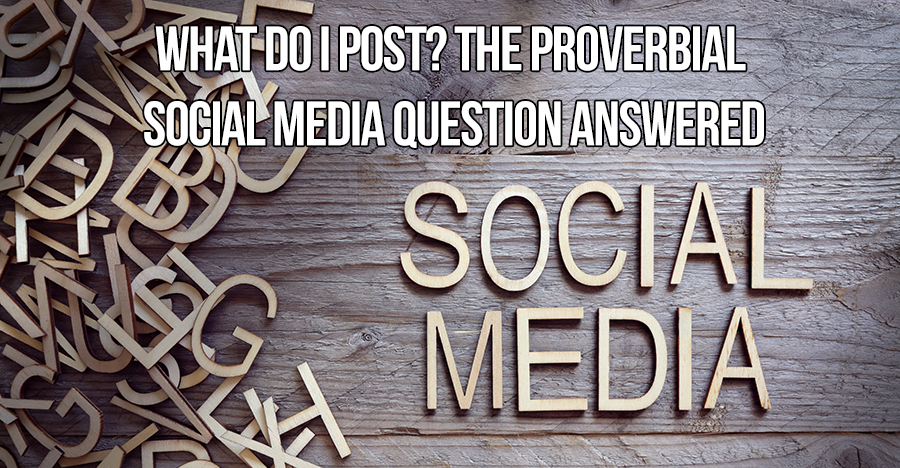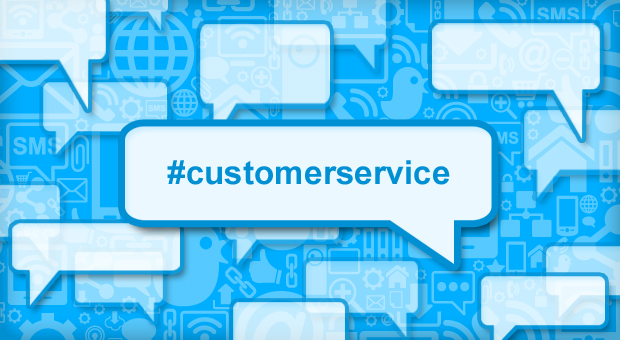
What Do I Post? The Proverbial Social Media Question Answered
 I work with a wide range of clients, from solopreneurs to marketing agencies and even global conglomerates. What’s the most common question across the gamut, no matter what size the digital presence? What do I post? There are 4 general types of social media content that any marketer needs to be aware of:
I work with a wide range of clients, from solopreneurs to marketing agencies and even global conglomerates. What’s the most common question across the gamut, no matter what size the digital presence? What do I post? There are 4 general types of social media content that any marketer needs to be aware of:
- Humor
- Of course, everyone loves to laugh. Ever notice that funny memes go viral quickly and easily? It’s a no-brainer. Just make sure the humor is appropriate and in good context. You’d be surprised at how non-profits can use humor, but some of the more serious causes should tread lightly.
- Inspirational
- Non-profits, here’s where you can shine… anyone, actually. People just love a bite-size message that boosts their confidence, adds a little spring to their step, you get the idea. You can turn great quotes into visual content here, but be sure to quote the original author here as well as adding your own branding (logo).
- Useful/Informational
- Everyone loves “life hacks”, but that might not be suitable for your brand identity. Think of other useful and information content – put yourself in the shoes of your target audience and think of what information can make their lives easier. Is it a sell-your-home checklist? A list of foods that are ideal for a particular health condition? Perhaps a how-to guide about the role of color choice in branding your company’s promotional materials, from the website to the business cards. This is the category where lead magnets come in strong, both organically and in paid promotion.
- Escapism
- Nearly everyone loves a moment or two to escape the everyday… some more than others, but it’s pretty universal. While this may be an area where non-profits and brands related to serious causes need to be careful, like with humor, almost anyone can dig up “take me away content”. Whether it’s a photo of somewhere exotic or a post that solicits feedback, like “name a place you’ve wanted to visit your entire life”, this category of content is engaging and gets people to share so that they can better engage with their friends/connections.
 Some companies, like Baldwin Publishing, specialize in providing one type of content for a narrow range of industries – health and wellness – and they’re good at it. But if you’re trying to market a restaurant, healthy-but-delicious recipes you can make at home are the last thing you want, because you want people to eat out, right? If you’re struggling to get the ball rolling, get a good marketer to craft a couple months’ worth of content to get you going. Before you worry about the cost of the content, think of the opportunity cost lost if you’re spending too much time spinning your wheels and getting nowhere with your audience.
Some companies, like Baldwin Publishing, specialize in providing one type of content for a narrow range of industries – health and wellness – and they’re good at it. But if you’re trying to market a restaurant, healthy-but-delicious recipes you can make at home are the last thing you want, because you want people to eat out, right? If you’re struggling to get the ball rolling, get a good marketer to craft a couple months’ worth of content to get you going. Before you worry about the cost of the content, think of the opportunity cost lost if you’re spending too much time spinning your wheels and getting nowhere with your audience.
A few critical things to remember are what not to post. Some claim to be social media experts simply because they’re publishing content about themselves all the time. Don’t be that person. A few rules to live by are:
- Quality vs. quantity – you need both
- Some take the “everything” approach, putting nearly every moment of their lives on social media, especially Facebook Live. With all due respect, you’re not that interesting. No one is. A social media manager whose only content is about themselves is breaking the critical cocktail party rule. Think of social media as a cocktail party… if you walked in to a party and talked only about yourself, it would take only a few minutes before others made up excuses to step away from you. Talk about something useful, funny, etc., and you’ll soon be surrounded by a crowd of new friends. Social media works much the same way.
- Some post great content, but not enough of it. The benchmark across almost every industry is at least once per day, and many of the most-followed brands are posting a few times per day.
- The loophole
- The only way to compensate for good content but a lack of it is to boost – and whatever you’re boosting, it’d better be interesting. A brand that posts only a couple times per week but devotes a weekly budget to promote one valuable piece of content each week can get away with a skimpy content calendar. It’s a delicate loophole, but it can work if you do it right.
- First impressions
- Remember that the vast majority of people will have their first encounter with your brand on social media. They may do a quick scroll through your page, which forms their first impression within seconds – literally.
- Some want to use Facebook’s fabulous audience targeting but don’t want to be bothered with posting good content regularly. This is the fastest way to lose credibility. Even hovering over the name of your page reveals a preview; if they’ve seen your ad, but see nothing when they glance at your page or page preview, your ad just lost all credibility.
Last but definitely not least, the rules of bartending… yes, they apply even more to social media content as they do to talking with customers. Never, under any circumstances, talk about sex, religion or politics. That’s for your personal profile. And when it comes to your personal profile, make sure it’s locked down! People will come to check you out personally, and you can alienate them just as much if your strongly-opinionated posts are public. Keep your personal and professional social lives separate!
Be sure to also check out my podcast on this topic and as always be sure to ask any questions with the hashtag #askcamille









